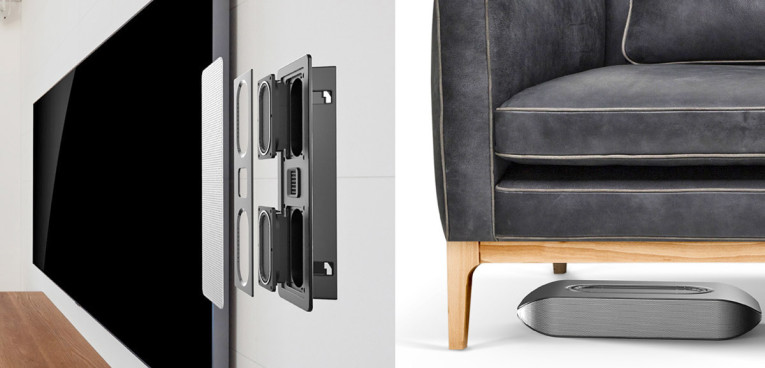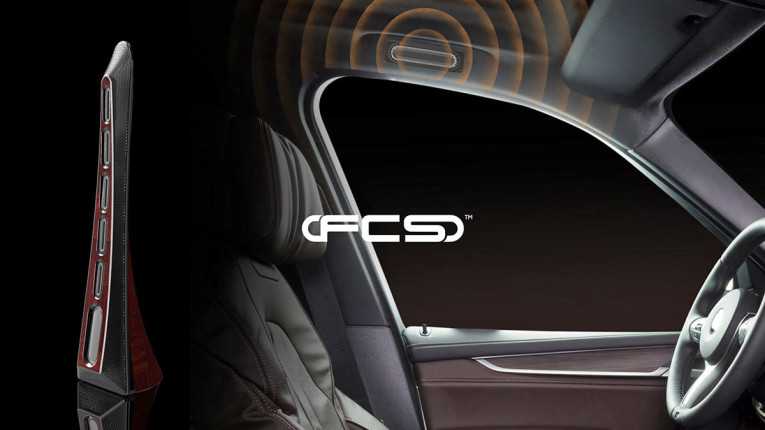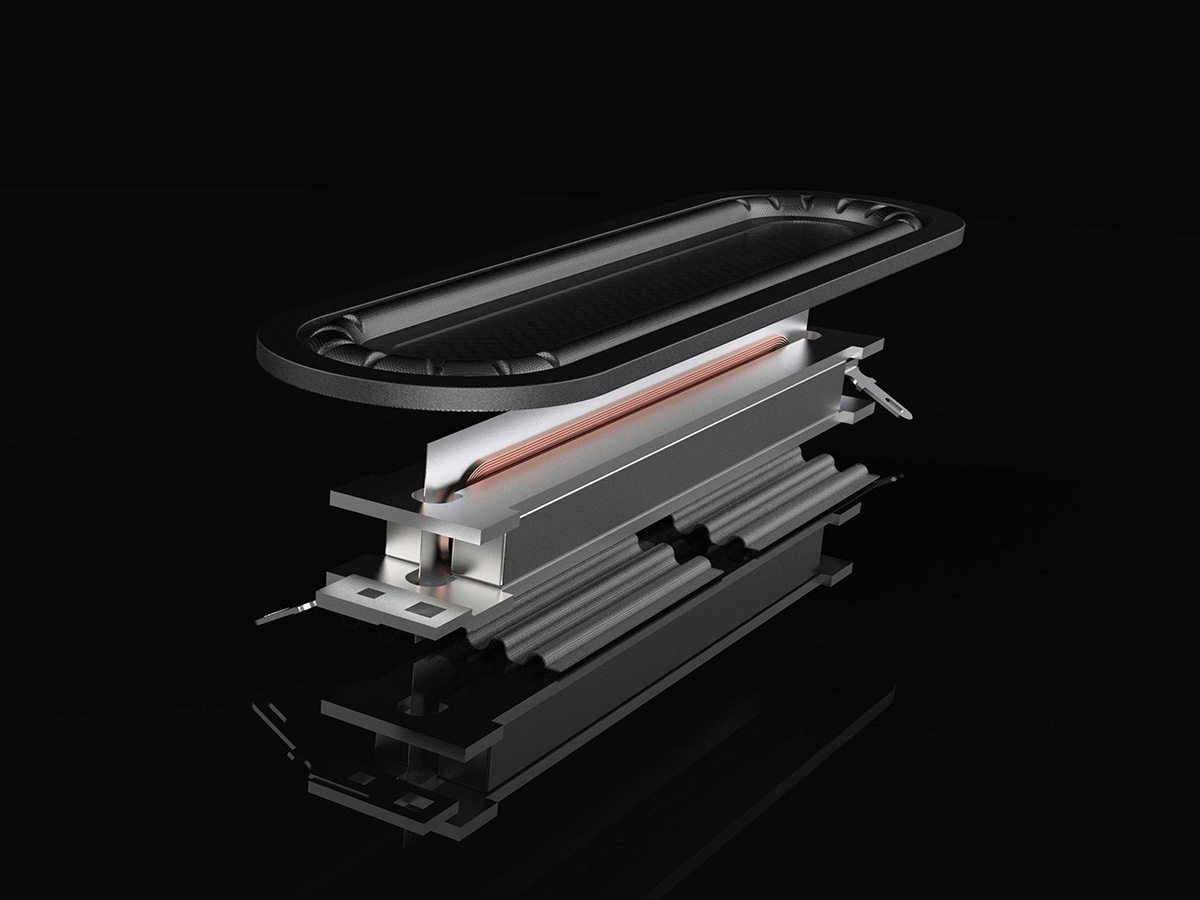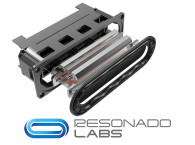The loudspeaker industry has done its part in keeping up with trends, particularly as we find ourselves in a wave of innovation centered on making everything from refrigerators to watches voice enabled. Thanks to new and better materials, from polypropylene cones to neodymium magnets, new speakers have certainly sprung up over the years — some to meet specific demands such as the given example of thinner products, and some as high-end alternatives with very specific benefits. Some are entirely new speaker types, and some are simply variations of the conventional conical electrodynamic speaker driver, such as high aspect ratio drivers known as "elliptical" or "oval" drivers by some or "racetrack drivers" by others.
Many have different opinions about the value, or lack thereof, of racetrack drivers over circular drivers, from breakup mode variations, to distortion levels, to uneven dispersion patterns due to asymmetry and cone reinforcement requirements. All of that aside, the racetrack driver does have a rather concrete place in the loudspeaker market, and the biggest reason for this is because manufacturers find themselves needing to create innovative product designs that are tailored to customers’ demands.

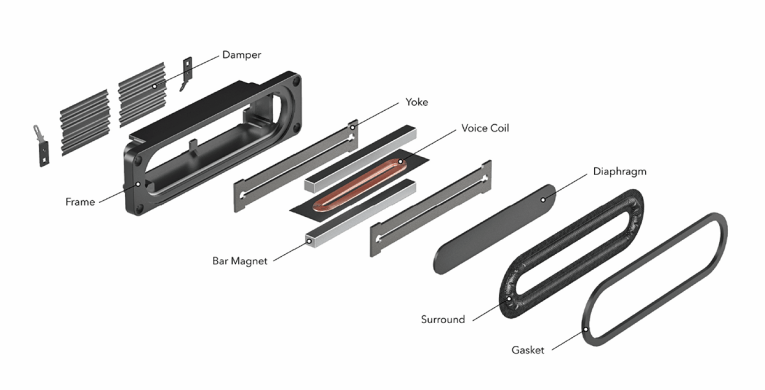
These demands, stemming from aforementioned market trends, require reducing product depth and overall “bulkiness” without sacrificing acoustic performance — meaning that cone area must be maximized in restricted spaces. This enables manufactures to produce not only sleeker and more compact products, but also enables them to introduce entirely new designs into the market. For these reasons, Resonado Labs developed Flat Core Speaker (FCS) technology, a novel electrodynamic speaker type with this racetrack form.
Resonado Labs’ patented FCS technology, currently available to brands through licensed manufacturers Soundlab and Zylux, enables transducer architecture for a racetrack driver with a low-depth structural profile that exhibits a larger bandwidth of pistonic behavior with wide dispersion. Resonado Labs took the parts of the loudspeaker we’re all familiar with and restructured them in a way that was specifically optimized for a racetrack driver form (see Figure 1 and Figure 2).
As opposed to the conventional cylindrical magnet and voice coil assembly, FCS technology, in its base form dubbed FCS SingleCore, introduces an architecture with a dual parallel bar magnet and planar voice coil array mounted perpendicularly to a flat diaphragm. FCS SingleCore drivers are typically designed with a 5 to 1 aspect ratio, which, as with all other racetrack drivers, results in wide dispersion.
This can be regarded as an advantage or disadvantage, depending on the use-case scenario. When oriented vertically, the driver will yield wide line source horizontal coverage with reduced midrange ceiling and wall reflections.
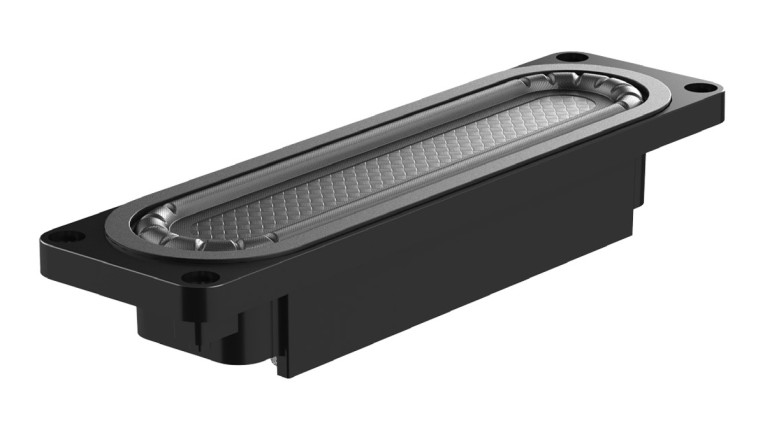
The Neo Mid 5
Resonado Labs released its first commercial driver at CES 2020, a 5.28" × 1.44" × 1" 30W, 4Ω midrange driver called the Neo Mid 5. The Neo Mid 5 exhibited impressive off-axis response across the short edge of the driver. It displayed the frequency response and SPL of a larger driver, represented by the long axis of the driver, while creating high dispersion up to a frequency where wavelength matches the length of the short axis — 15kHz in this case.
Although these characteristics did garner positive reactions by many of our prospective clients, wide dispersion is to be expected from most racetrack drivers, particularly ones with a very high aspect ratio like the Neo Mid 5’s. What really differentiates FCS technology compared to other racetrack drivers is the ability to outperform most in both design and acoustic performance thanks to the novel structure’s unique motor design.
The bar magnet and voice coil assembly was designed to enable one thing that a cylindrical magnet and voice coil assembly couldn’t — the distribution of even force along the entire length of the diaphragm. Intended to exhibit a wider bandwidth, the Resonado driver has increased piston area that results in greater efficiency than conventional racetrack, or even circular drivers of the same height. In addition, the fact that our motor uses the same material supply chain despite its unique form eased the adoption of FCS technology for our licensed partners, thereby successfully landing integration of the Neo Mid 5 into products slated for release this year.
The Neo Mid 5 is built with neodymium magnets, aluminum for the bobbin to provide the necessary stiffness to the voice coil wound with copper, a high-temperature plastic frame, and a carbon fiber diaphragm. The diaphragm was later replaced with a honeycomb paper in a second iteration of the driver as shown in Figure 3, which combined with other tweaks, extended the frequency response from 11kHz to 15kHz. The change in frequency response is shown in Figure 4 and Figure 5, respectively.
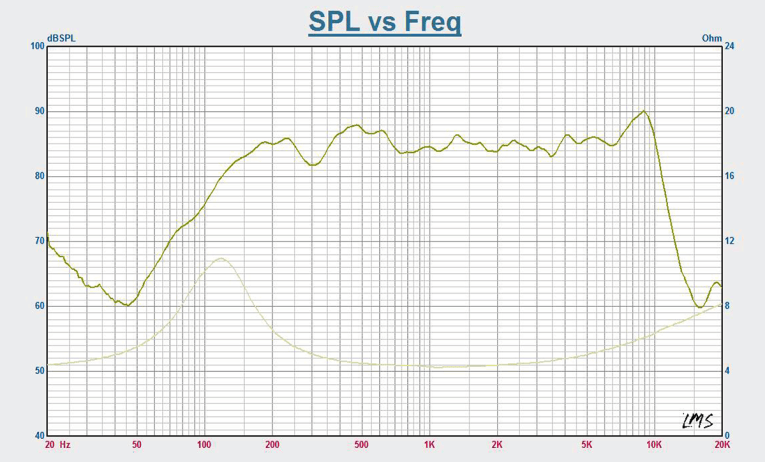

Variations of the FSC Architecture
In addition to FCS SingleCore, Resonado Labs has developed additional variations of the base FCS architecture to address specific driver types and applications. FCS DualCore, shown in Figure 6 for example, was developed to address the woofer and subwoofer driver types. The bar magnet and planar voice coil array was engineered to be modular, meaning that a third row of bar magnets and a second voice coil could be added to the motor to enable a structure with a larger cone and greater surface area to push more air for the reproduction of lower frequencies, while still maintaining a low-profile structure and pistonic behavior.
FCS DualCore is being used to develop an 11" × 4"× 2" 200W 4Ω subwoofer with a targeted frequency range of 30Hz to 300Hz at an 89dB sensitivity. Although this driver is still in development, Resonado Labs has previously demoed an 8" × 4" × 1.7" 60W 4Ω prototype woofer with a frequency response of 40Hz to 4kHz as an early iteration of the 11" × 4" subwoofer.
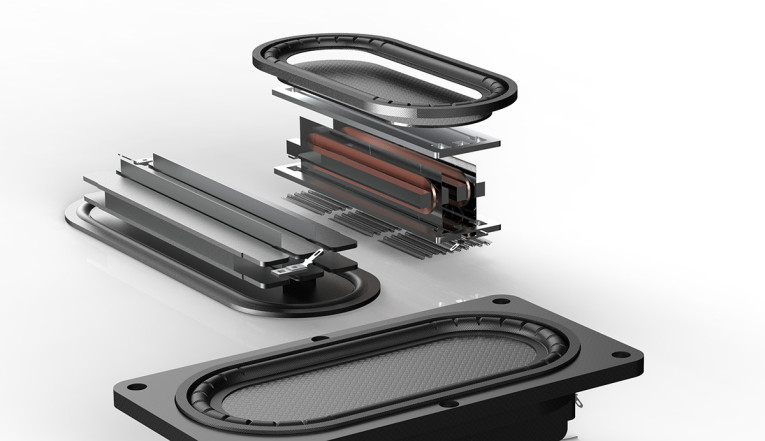
As a fully scalable driver architecture, FCS technology has a number of potential applications ranging from consumer electronics, to automotive, to architectural spaces. Resonado Labs and FCS technology licensees are currently in the process of prototyping the first FCS-Enabled soundbar for a major brand, with the objective of conceiving a product that will shake the market with a groundbreaking design and uncompromising performance. A second application currently in the works is an FCS-Enabled electric vehicle where the technology’s form factor and performance advantages allow for flexible positioning of drivers for a more immersive listening experience.
As commercial projects progress, Resonado Labs continues to innovate by pushing the boundaries of electrodynamic speaker types. Its latest addition to the FCS technology portfolio is FCS Bidirectional, a product set to officially debut in 2021. By eliminating constraints of conventional conical speaker types and providing a driver that thrives in both design and performance, Resonado Labs hopes to foster unprecedented innovation across industries. Some examples of possible applications are provided in Figure 7. For more information about this new technology, visit the Resonado Labs website at www.resonado.com. VC
This article was originally published in Voice Coil, January 2021
